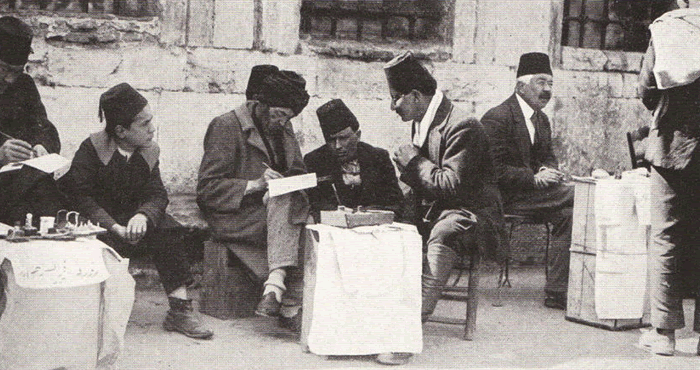A LIVING BILLBOARD OF ILLITERACY, THE PUBLIC LETTER-WRITER:
In Turkey elementary education is nominally obligatory and five middle-class schools for girls have been opened in the last four years; but only one in twenty-four of the population yet attends school and illiteracy is so prevalent that even the apparently well-to-do have no hesitancy in advertising their inability to write a simple business letter (1922).
Click here to enlarge.
Literacy in the Ottoman Empire varied greatly depending on social class, gender, and location. While the elite and religious scholars had access to education, the majority of the population remained illiterate. Education was often tied to religious institutions, such as madrasas, which taught reading and writing in Arabic, as well as religious studies. Literacy was more common among men than women, and urban areas had higher literacy rates than rural ones. The use of Ottoman Turkish—a complex blend of Turkish, Arabic, and Persian—also made reading and writing more difficult for the general population. Despite this, literacy gradually improved over time, especially during the 19th century with the Tanzimat reforms, which introduced more secular and modern schools aimed at broadening education and increasing literacy rates throughout the empire.
|














